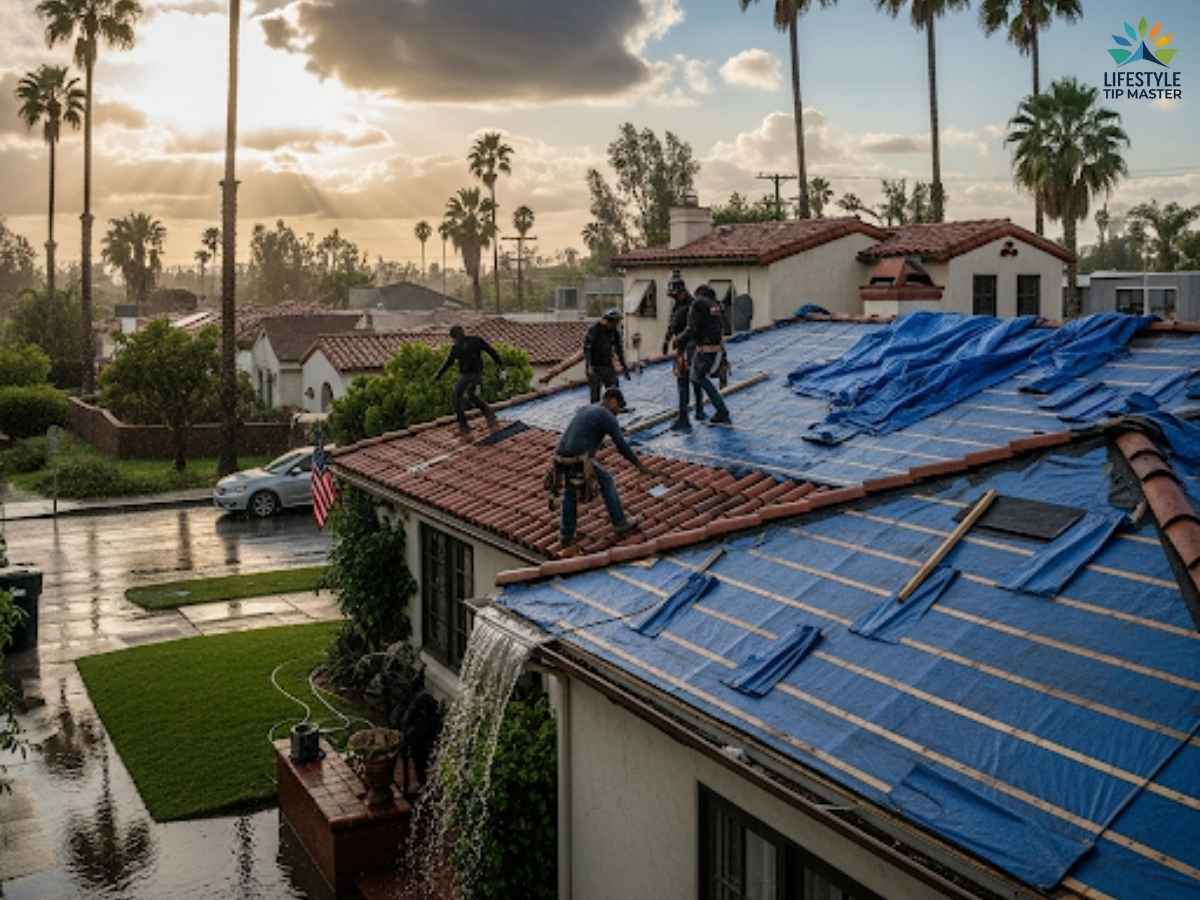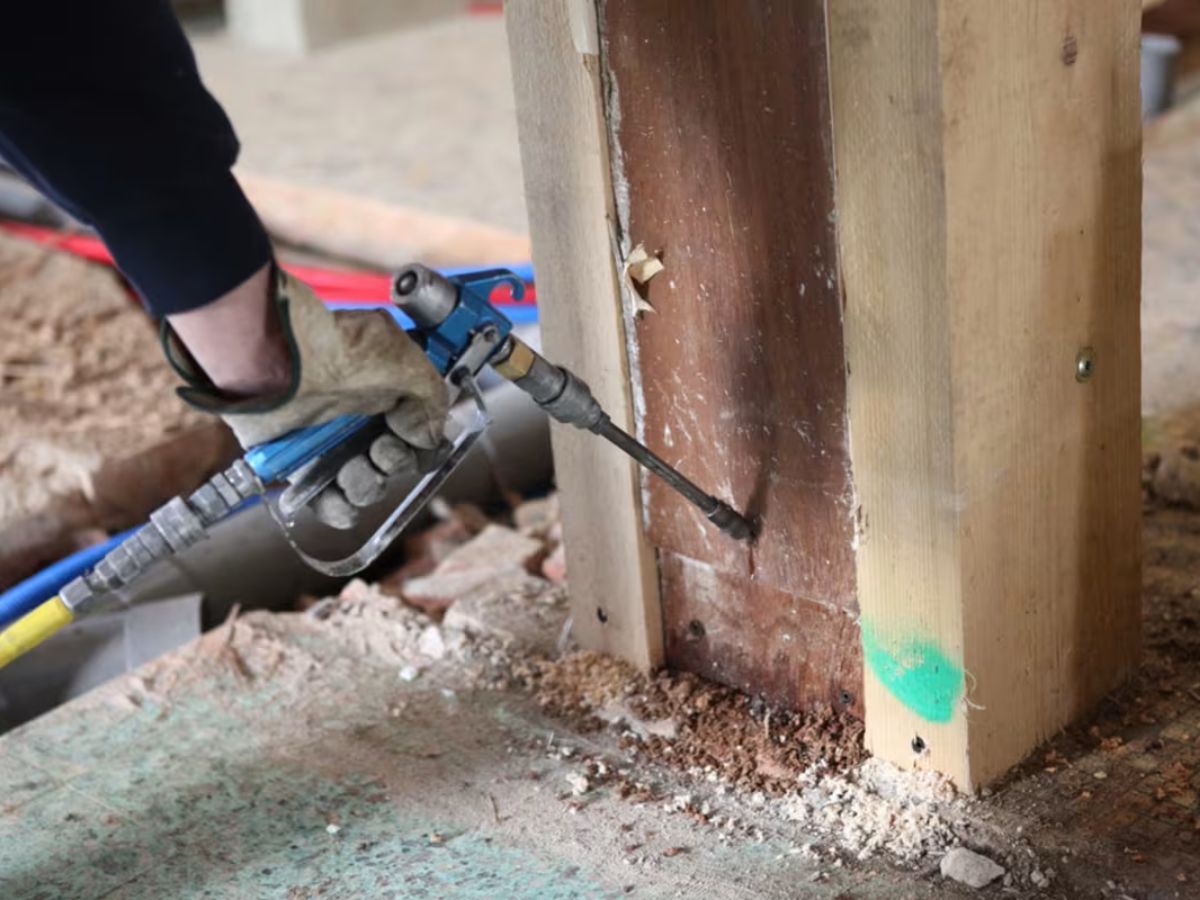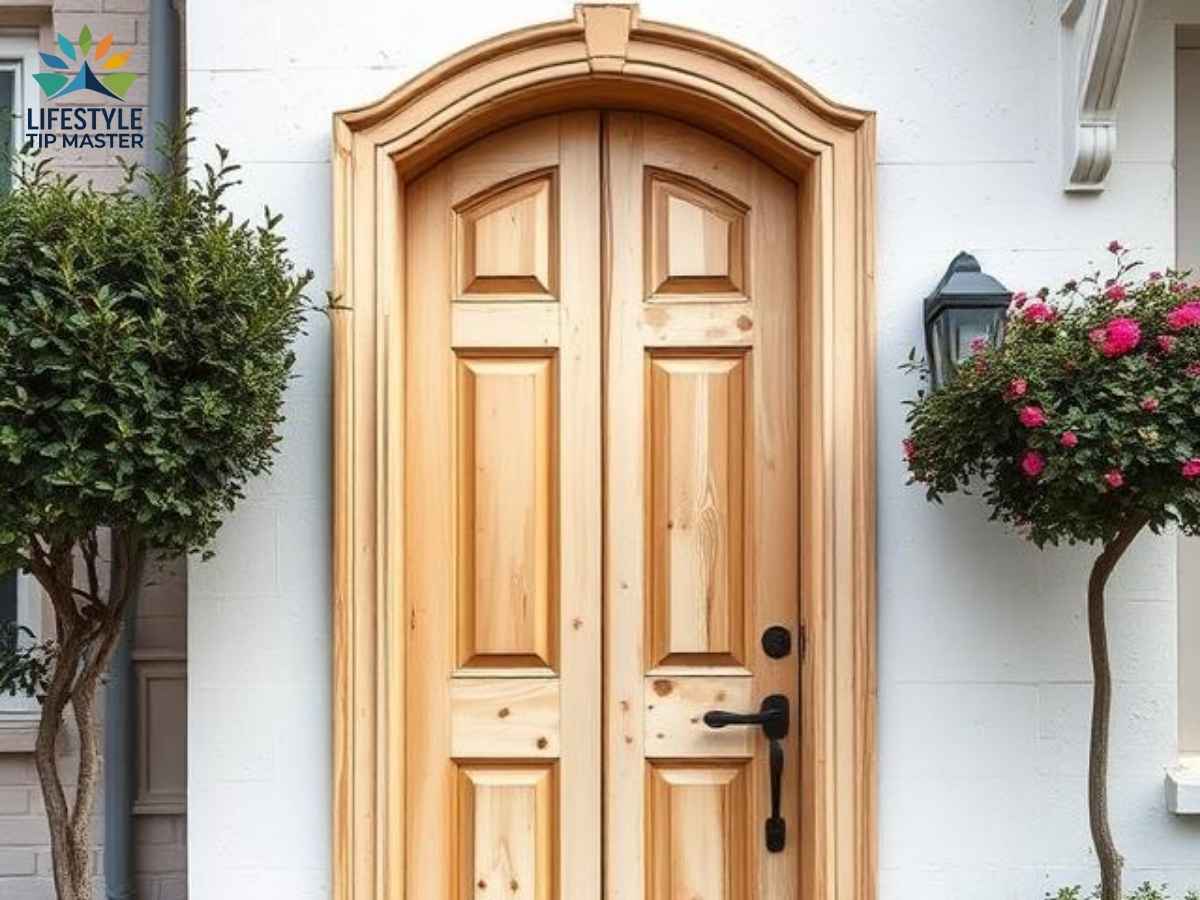Imagine a quiet Saturday morning in Hancock Park: the air is thick with the scent of blooming roses, bees dart between bursts of color, and a gentle mist from efficient drip lines keeps every blossom at its peak. Homeowners step out with coffee, pausing to admire their Rose Garden’s beauty and resilience—made possible through careful community irrigation maintenance. In a city where Mediterranean droughts meet manicured lawns, maintaining a spectacle-worthy rose garden requires an insider’s know-how and a dedication to local best practices.
Table of Contents
The Los Angeles Landscape: Unique Needs, Big Rewards
Los Angeles isn’t just a city—it’s a mosaic of microclimates, from coastal fog in Santa Monica (ZIP 90405) to the drier warmth of Pacoima (ZIP 91331). Our rainfall flirts with 15 inches per year, with extreme year-to-year swings. Water rates are among California’s highest, and LADWP’s tiered billing makes every drop count. For rose enthusiasts in communities like West Adams, Silver Lake, and Sherman Oaks, successful garden irrigation means embracing waterwise strategies, smart metering, and regular site-specific maintenance.
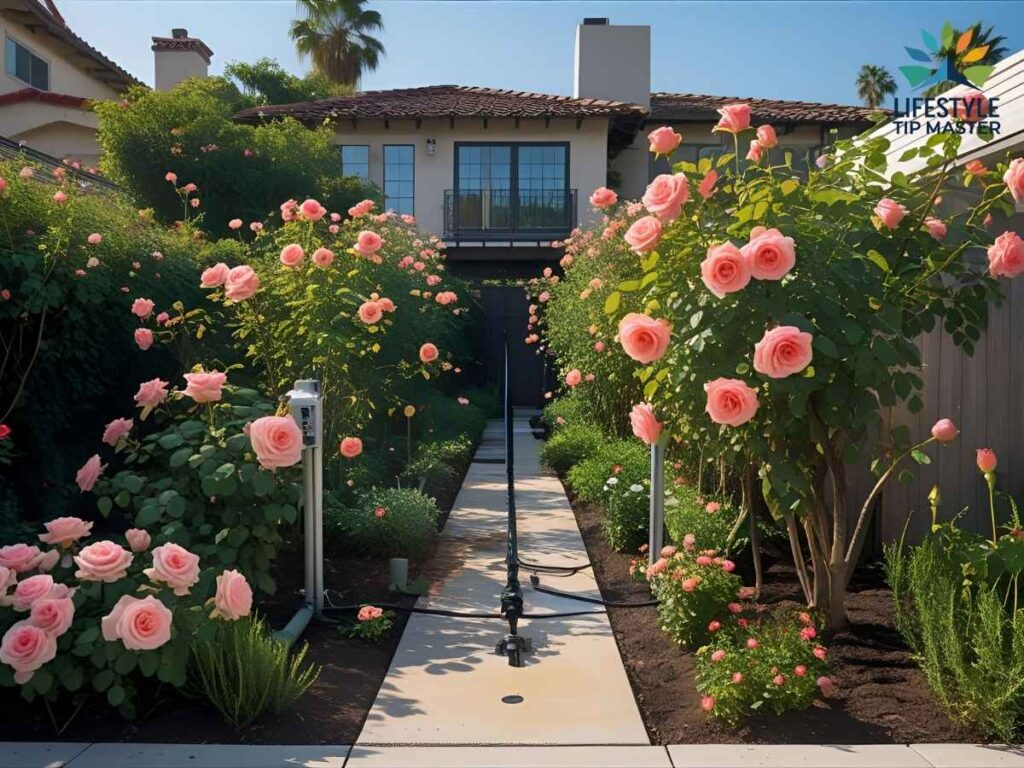
Here in LA, community rose gardens—whether public plots like the Exposition Park Rose Garden or shared townhouse courtyards—face specific challenges:
- Hard clay soil in Beverly Glen restricts infiltration.
- Frequent drought and water restrictions, with odd/even watering schedules set by agencies like LADWP.
- Frequent vandalism of public fixtures in community plots across Boyle Heights.
- Old pipes in classic neighborhoods (think Windsor Square) prone to leaks.
Common Irrigation Issues in LA Rose Gardens
- Clogged emitters from hard water mineral buildup.
- Misaligned or broken spray heads after windy Santa Ana events.
- Inefficient traditional sprinkler timers not matched to seasonal climates.
- High evaporation rates during peak summer (over 60% loss on hot afternoons).
Pro Solutions for Community Rose Garden Irrigation
Smart Watering Schedules
LA’s roses thrive on deep, infrequent watering. Community irrigation systems should prioritize:
- Early morning watering—before wind and sun ramp up.
- Drip and soaker systems over traditional overhead sprays (less fungal disease, saves water).
- Seasonal adjustments; in winter, roses need 30–50% less water.
- Soil moisture sensors and “smart” timers, especially in large plots.
Efficient System Design and Upgrades
- Use multi-zone controllers: Control shaded/part sun areas separately from full-sun beds (essential for larger shared gardens in places like Sepulveda Basin).
- Convert old pop-up sprays to drip irrigation for precise root-zone targeting.
- Regular valve and pipe checks: In older communities, roots and soil shifts often cause hidden leaks.
- Integrate rain and weather sensors. LADWP and LA County DWP sometimes offer rebates for smart irrigation upgrades—these sensors can cut water bills by 10–20%.
Regular Community Maintenance Mills
- Monthly “inspection walks,” best done as a group activity—neighbors in Mid-City have made this a neighborhood event.
- Quarterly flush of drip lines to prevent minerals building up, especially important in hard-water regions like Granada Hills.
- After high-wind days or city maintenance, always inspect for shifted pipes, exposed lines, or broken heads.
- Replace mulch annually to minimize evaporation and suppress weeds.
Local Success Stories: LA’s Rose Garden Champions
In the heart of Exposition Park (90037), the neighborhood rose garden is a landmark—a city oasis enjoyed by students, families, and tourists. In 2024, the community tackled persistent leaks in main lines dating back to the 1980s. With support from the LADWP’s Technical Assistance Program, volunteers replaced cracked PVC with flexible drip lines and added automatic soil moisture sensors. The result: a 25% cut in water use, fewer fungal outbreaks, and roses that won this year’s LA Community Bloom Award.
Down in Silver Lake (90026), a historic multi-unit property hosts a shared rose and herb garden. After a season with scorched blossoms and brown leaves, HOA president Lynn Tran led a system overhaul. They swapped timers for smart wifi controllers, allowing real-time adjustments when the weather shifts. Now, residents receive monthly usage reports and tips via email, thanks to integration with LADWP’s Water Efficiency Portal. With community buy-in, summer bloom rates are up 30% and water conflicts are down.
In Sherman Oaks (91423), the Magnolia Place Neighborhood Association faced repeated vandalism of garden fixtures in their shared rose beds. Their solution? A hybrid system: sturdy, tamper-proof irrigation boxes, and clear signage about scheduled maintenance. After switching to low-flow drip and engaging a local youth group for quarterly checks, vandalism dropped, costs stabilized, and roses now flourish—even during tier-three water restrictions.
Meet the Top 3 Local Irrigation Service Providers
1. Smart Sprinkler Repair
Service Area: Citywide, with specialties in Eagle Rock, Glendale, and Pasadena.
Why They Shine: Experts in troubleshooting and upgrading all irrigation models—residential and public shared gardens. Known for their fast response time and transparent pricing.
Website: smartsprinklerrepair.com
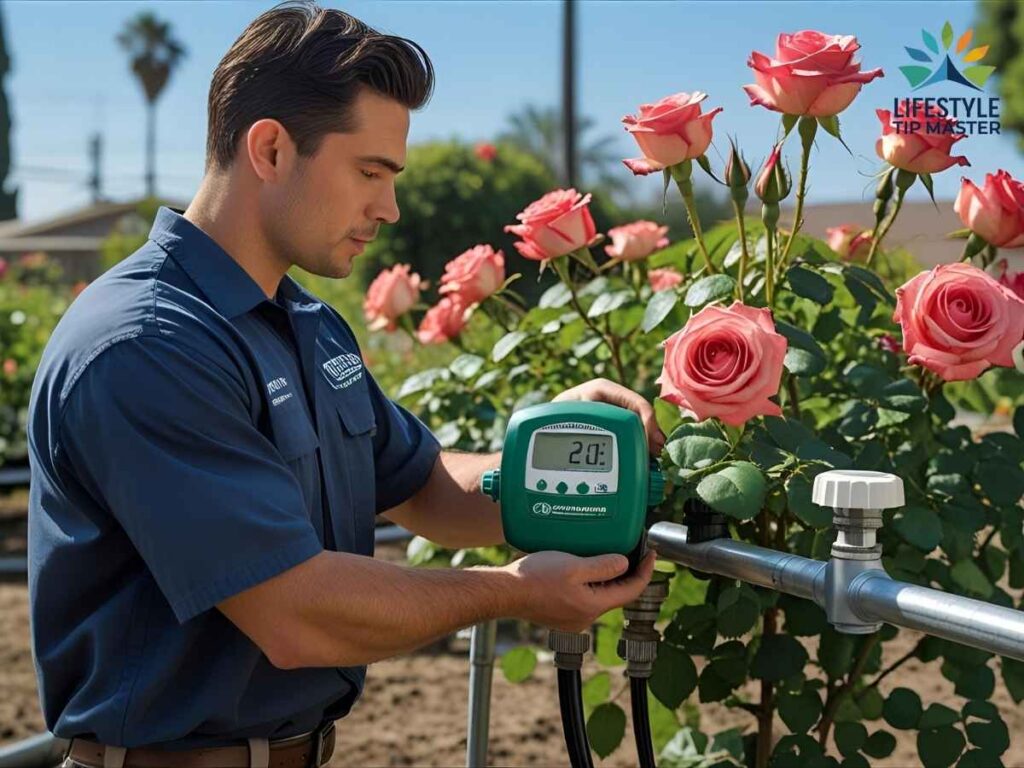
2. Elevated Seasons
Service Area: From Hollywood estates to compact community gardens throughout West LA and the Valley.
Why They Shine: Focus on eco-conscious solutions using the latest tech. Friendly, bilingual crews; excellent for HOA-managed and institutional gardens.
Website: elevatedseasons.com
3. S & L Sprinkler Repair
Service Area: Specializes in Woodland Hills, Canoga Park, and the western San Fernando Valley.
Why They Shine: Full-spectrum irrigation care—installation, seasonal maintenance, and emergency leak repair. Neighborhood favorite for older gardens needing modernization.
Website: sandlsprinklerrepair.com
Local Tools, Resources & Internal Links
- Visit our Rose Garden Design Guide for LA yards to explore plant pairings and layout tips for California-friendly blooms.
- For watering ordinance updates and conservation rebates, check with LADWP’s Water Conservation Portal, LA County Public Works, and California Landscape Contractors Association.
- LA’s 311 System lets you report broken city garden sprinklers or vandalism quickly.
- The Exposition Park Rose Garden opens year-round for inspiration, events, and hands-on tours.
- Internal links:
- How to Select Drought-Tolerant Roses
- Community Gardening in Los Angeles: Getting Started
- Drip Irrigation Systems: A Los Angeles Guide
Frequently Asked Questions
How often should a rose garden be watered in Los Angeles?
Usually, 2–3 times a week during peak summer, once a week in cooler months. Drip and deep watering is best—avoid quick surface sprays. Adjust for rainfall and heat waves using smart controllers or by regularly checking soil moisture.
What’s the best type of irrigation system for roses here?
Drip irrigation is ideal for Los Angeles—delivering water slowly to the root zone, reducing evaporation, and limiting fungal problems. Overhead sprinklers increase water use and disease risk.
Do I need a permit for installing new irrigation in a community garden?
In most LA neighborhoods, small residential upgrades don’t need a permit, but larger or public garden installations may. Always check with the LA Department of Building and Safety and your HOA. For new water meters or graywater systems, city paperwork is required.
What should I do if my drip system gets clogged?
Remove and clean the emitter (soak in vinegar if mineral deposits are heavy), then flush the entire line with water. Replace emitters if persistent clogging occurs. Prevent buildup with annual system cleans or by installing in-line filters.
Can I apply for rebates on irrigation upgrades?
Yes! Programs from LADWP’s Rebate Center offer credits for installing smart controllers, moisture sensors, and water-efficient irrigation technology. Many local suppliers participate in rebate fulfillment.
